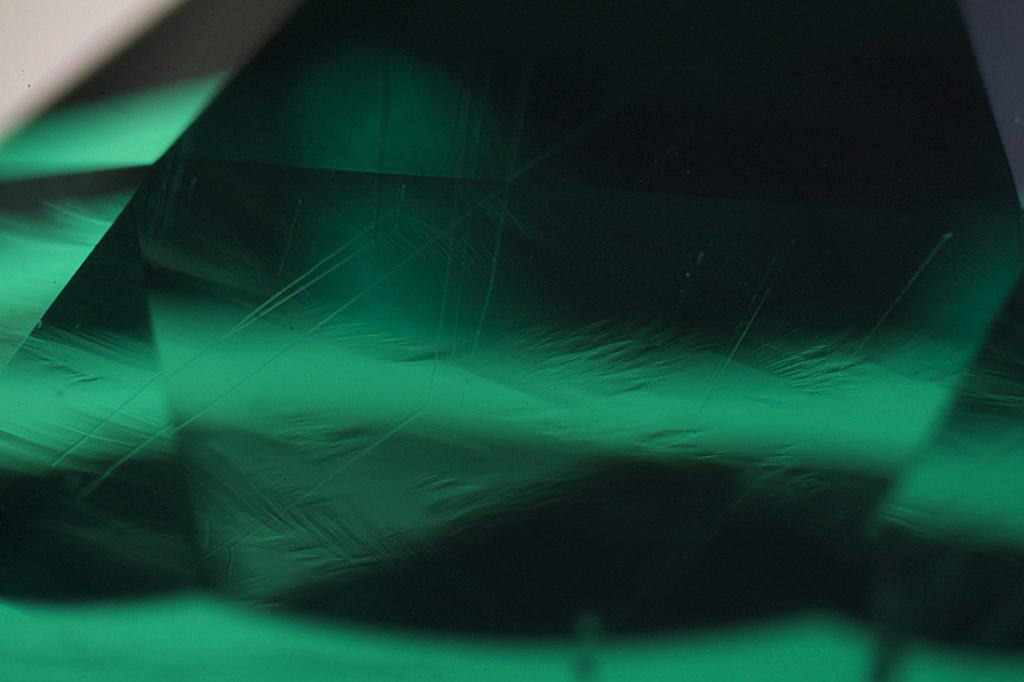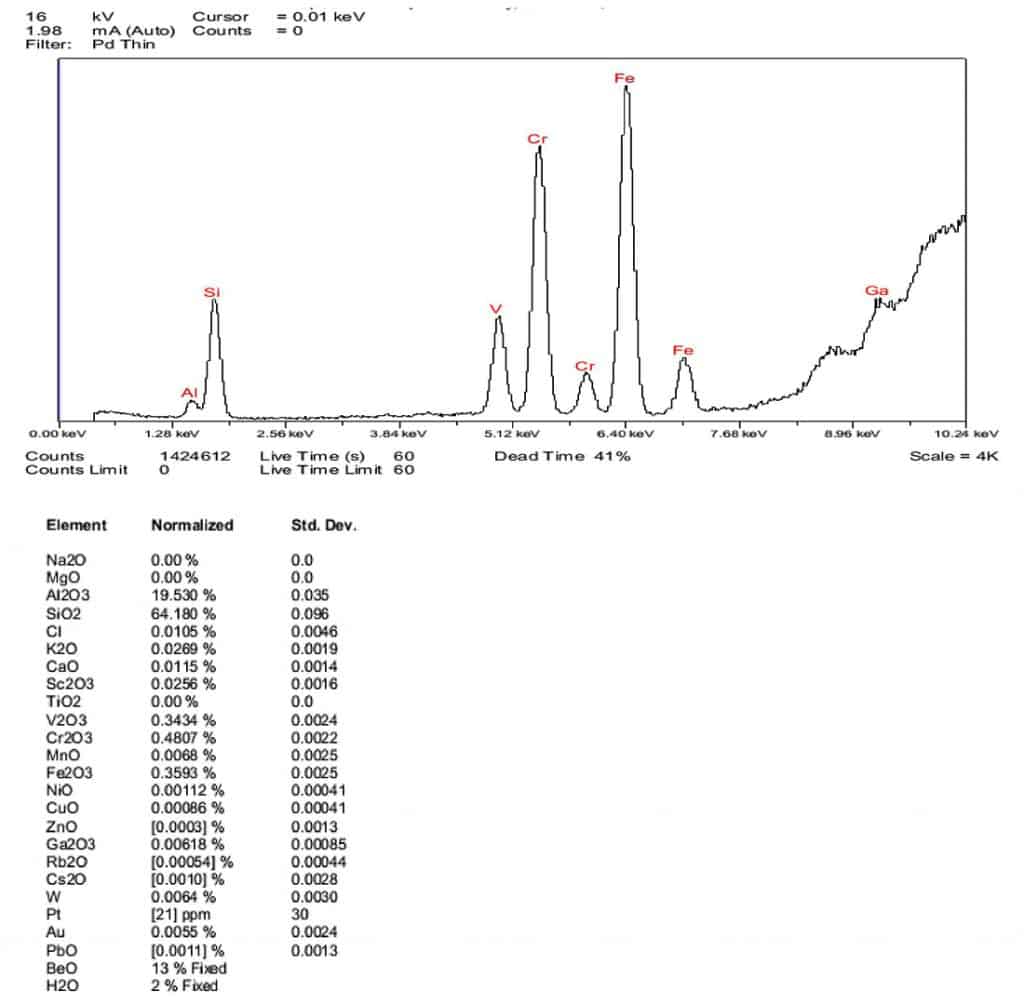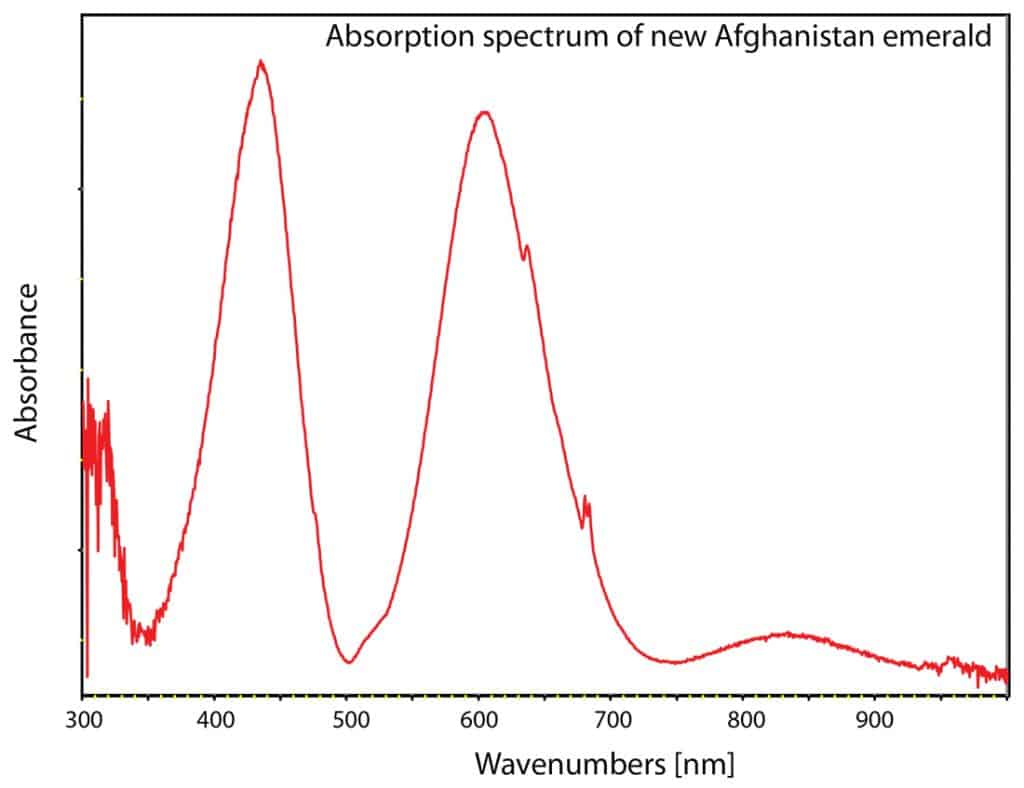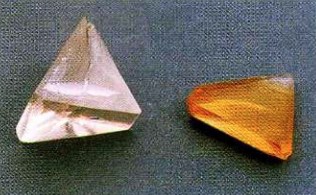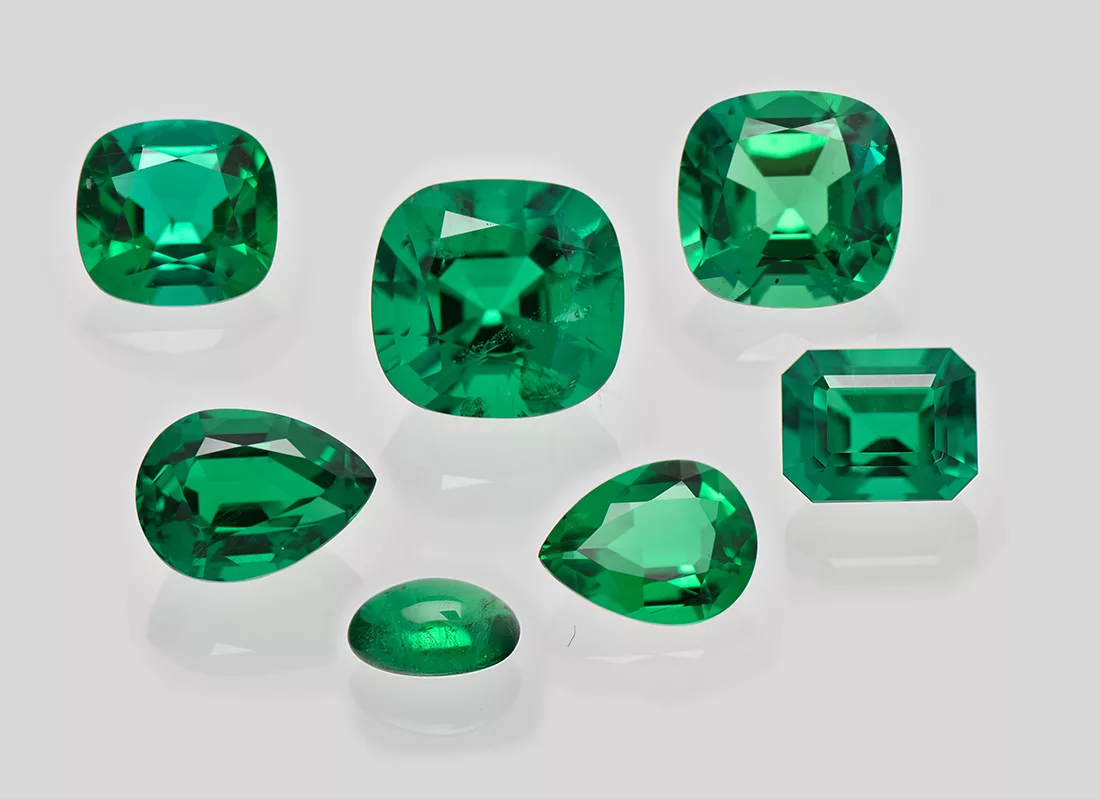
New Emeralds from Afghanistan
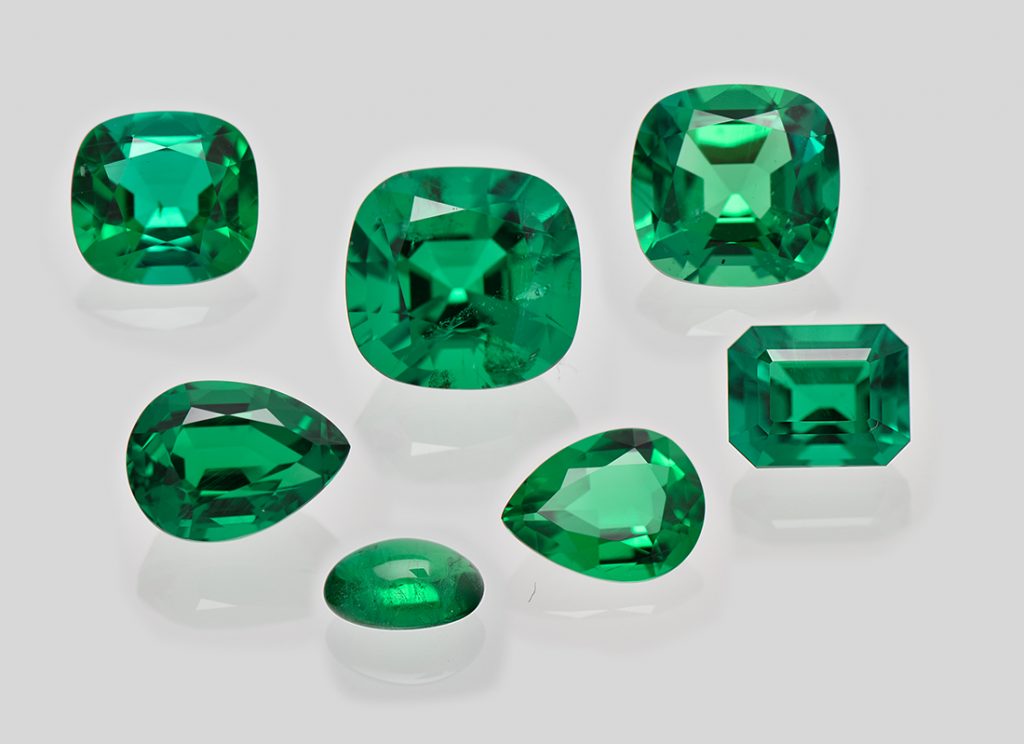
by Dr. M. S. Krzemnicki, first published in Facette 24 (February 2018)
Emeralds from Afghanistan are well known in the trade for their beauty and size, and are considered a historic source of fine emeralds. Despite the political turmoil of recent decades, these mines have recently produced again a number of gems of outstanding quality and size, as we could observe at SSEF during the past few months. The successful sale of a stunning emerald of 10 ct from the Panjshir mines at the Christie’s Hong Kong sale in December 2015 marked just the beginning of this revival.
From a gemmolgical point of view, we can state that there are two different types of emeralds from Afghanistan, a) the classic material from Afghanistan, which has been described in literature quite extensively (Bowersox et al., 1991, Gems&Gemology; and Schwarz and Pardieu 2009, InColor magazine) and b) new material of exceptional similarity to Colombian emeralds which entered the trade presumably early in 2017. These new emeralds from Afghanistan, reportedly found in a single gem pocket in the Panjshir mines posed quite some problems for the gemmological community and labs. Being of outstanding quality and purity, they resemble in many aspects – including colour – the finest quality of Colombian emeralds.
A spectacular series of these new Afghan emeralds analysed at SSEF in September 2017 finally enabled us to resolve the mystery about these new stones and to define clear criteria to distinguish them from their Colombian cousins.
Microscopic observations revealed that the new material from Afghanistan contains irregular and spiky fluid inclusions (three and multiphase) very similar to Colombian emeralds. They are largely dominated by very fine and long parallel hollow tubes along the c-axis of the original emerald crystal (Figure 2), again very deceiving as similar features are well known in Colombian emeralds. A notable difference was however the absence of distinct (hexagonal) graining in all our specimens from Afghanistan, a feature rather common in emeralds from Colombia. Only in one specimen from Afghanistan we could observe a very weak and rather chevron-like growth pattern, together with few very fine and kinked hollow tubes (Figure 3).
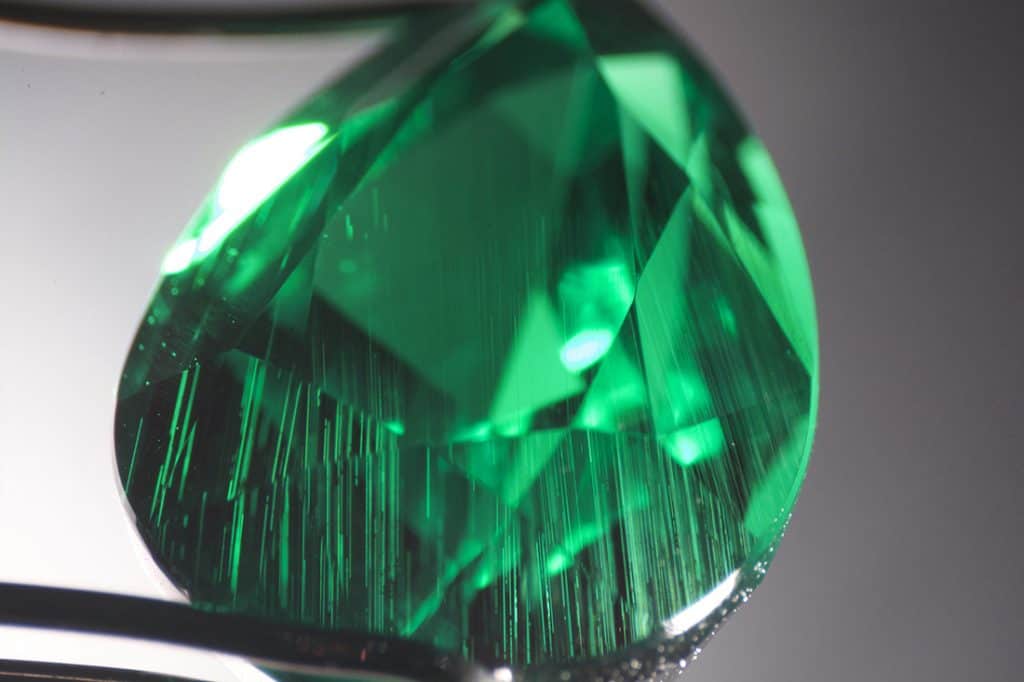
Classical gemmological testing further revealed that these new Afghanistan emeralds show a specific gravity of approximately 2.72 – well in line with Colombian material – but had refractive indices (ranging approximately from 1.582 to 1.592) slightly higher than most Colombian emeralds.
Coloured very similar to Colombian emeralds by a combination of chromium, vanadium and iron, the most important difference was found to be the distinctly higher concentration of iron (about 0.3 – 0.4 wt% Fe2O3) in all of these emeralds when measured with ED-XRF and compared to Colombian emeralds (usually distinctly < 0.1 wt% Fe2O3). The scandium concentration showed broad variations from 0.02 wt% to 0.14 wt%, so was not considered to be specific for this new material from Afghanistan.
The absorption spectrum of these emeralds shows main absorption bands in the visible range due to chromium and overlapping vanadium, and a small iron band at about 850 nm characteristic for Afghanistan emeralds (Figure 5), but usually not seen in Colombian emeralds.
In summary, the detailed study of these high-quality emeralds from this new find in Afghanistan finally enabled us to be the first laboratory to define clear criteria for a safe and reliable origin determination of this new material and a clear distinction from Colombian emeralds. However, it is not known at this point, whether there is an on-going production of similar emeralds in Afghanistan or if it was rather a lucky find of a single pocket filled with exceptional emeralds.
